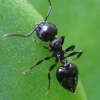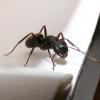I'm looking to make lids for my homemade outworlds so I'm trying to figure out what size of wire mesh to buy.
I have an Amazon gift card I can use, if they have something suitable that can be bought in Canada. I have Solenopsis molesta currently which I hear like to escape so something small enough for them would be great. I may not keep this species but I don't think many ants are smaller so that should work for a lot of ants.
I just received a Mini Hearth and the mesh is super tiny so something that size would be great. My plan is to use a few homemade formicariums (tubs and tubes types) and then buy a nice larger one when they get older. I'll know by then which ants I want to keep and I can buy the one best suited to them.
Any help would be very appreciated. My brain has the numerical ability of a 1st grader so I'm hoping to not buy the wrong size like I did with the test tubes. A damaged frontal lobe does not go well with a lot of mathematical abilities and visualizing scale is one of the things I find most difficult. Even harder when my eyes see one number but my brain sees another but it keeps life interesting.
At least I have all winter to figure this out so thanks for all the great information provided here, I'll get it all straight eventually.




















